Do you want to travel more but have a peanut allergy that is holding you back?
Stepping foot into a foreign country, a place where peanuts are served and you don’t speak the language, can be a terrifying experience. In 2014 and 2015, we traveled around the world with our peanut allergic son and want share our experiences with you. Since that trip, we have continued to travel and as we did so, continually updated this article. Tyler is now in his 20’s, so you’ll also hear directly from him in this article.
We want to show you how you can travel with a peanut allergy and stay safe.
About Us

Meet Tyler. Tyler was diagnosed with a life threatening peanut allergy when he was one year old. He also has milder reactions to several tree nuts.
Tim, Kara, and I do not have allergies to peanuts or tree nuts (although I am very allergic to stevia). We are fortunate, especially in this world where food allergies are becoming more prevalent.
The four of us traveled around the world, visiting 35 countries in 13 months, without one single serious allergic reaction. In total, we have visited 70 countries across six continents. It is possible to travel with food allergies and stay safe.
For those with peanut allergies or other food allergies who are contemplating traveling overseas, I know that it can be a nerve-wracking experience. Before we started our travels, I would wake up in the middle of the night, terrified of what it would be like to travel through Asia with Tyler. Horrible images of serious allergic reactions, anaphylaxis, and hospital visits in 3rd world countries would keep me awake at night. I kept thinking to myself, are my fears overblown? Or am I really an irresponsible mother for thinking we could safely travel with a peanut allergic child?
Most of my fears were unfounded. As we traveled through Thailand, Cambodia, Nepal, Vietnam, and many more places, we realized that finding safe food for Tyler was easy and convenient. Traveling with a peanut allergy was not as scary as I thought it would be.
Sometimes, our biggest fears are fears of the unknown. Hopefully, by the time you are finished reading this article, you will learn that it is possible to travel well with a peanut allergy.
Food Allergy Statistics
- 15 million Americans have food allergies.
- 1% of the US population is allergic to peanuts.
- The incidence of food allergies in the US doubled between 1997 and 2011.
- 1 in 13 children have a food allergy, which is about 2 kids in every classroom.
- Australia and Europe have similar statistics.
Basically, food allergies are on the rise and affect not only those with the allergies, but also the general population as well. Unfortunately, this is not a problem that is going to magically disappear.
Background Information on Who We Are and What We Have Done
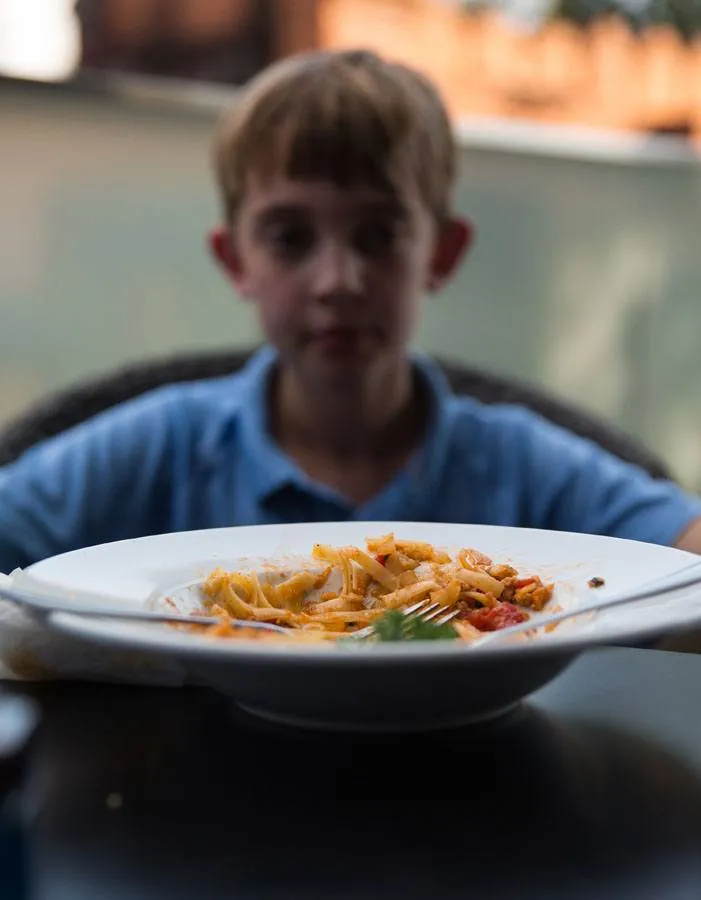
Tyler is 21 years old and has lived with a peanut allergy since the age of 1. We carry Epi-Pen auto injectors everywhere we go.
I worked as a physician assistant for 18 years (until running this travel blog full time). Although I did not work directly with food allergies (I worked primarily in Orthopedics and in the operating room) I do have extensive medical training and experience. My medical background, combined with managing Tyler’s peanut allergy and our extensive travel resume gives us some credibility on providing advice how to travel with a peanut allergy. Even so, I do not proclaim to be an expert on food allergies. You should always consult your physician if you have any questions.
We have traveled to 71 countries across six continents. During our 13 months around the world, we spent nine of them in Asia. Yes, we traveled to Thailand, Cambodia, China, Myanmar, Vietnam, Taiwan, India, and more, and had a fabulous experience. Tyler’s peanut allergy was always a concern but it did not take away from the enjoyment while traveling.
How To Travel With a Peanut Allergy and See the World
Here are our best tips and tricks on how to travel with a peanut allergy. Learn from our experiences about how to stay safe.
General Advice
Notify your physician when and where you will be traveling. Your allergist may be able to provide advice for the area you will be visiting.
Make sure your food allergy is covered by your travel insurance. In the unlikely event that you will need to visit a hospital you want to make sure the costs are covered.
Bring more medicine than you think you will need. It is much easier carrying extra medication than scrambling to find it in a foreign country. We traveled with 8 Epi-Pens for a 13-month trip. It was excessive but we took no chances. And we never needed any of them.
Airplane Flights with a Peanut Allergy
This can be terrifying, especially the first few times you do it. Traveling at 40,000 feet, trapped inside an airplane with people munching on peanuts all around you…just the thought of this keeps some people from even boarding an airplane. Flying is especially stressful for parents of toddlers with peanut allergies. We’ve been there and done that! Here are tips and tricks to keep you safe on the airplane.
Some airlines no longer serve peanuts. Consider using these airlines if possible.
If an airline does serve peanuts, you can request a “peanut free” snack to be served instead. Some airlines will fulfill your request, some won’t. But it doesn’t hurt to ask.
When booking your flight, contact the airline about the meals being served. They can usually inform you about the menu and the ingredients. This will help you plan whether or not you choose to eat the prepared meal or bring your own food.
Bring your own food. Sometimes it is just not worth taking the risk and eating airline food.
Airplanes are usually cleaned at the end of the day. Flights in the morning are more likely to be free of peanuts and crumbs, making this the safer time to book your flight.
At the gate, notify the flight agents of your peanut allergy.
Wipe down your seat and surrounding area to eliminate any peanut crumbs or residue. Some airlines will allow you to pre-board in order to do this.
Don’t put anything into the seat back pocket since empty peanut wrappers usually get stuffed into here and it becomes a collection ground for peanut dust.
Always carry your Epi-Pen with you. We also carried a medical letter of necessity obtained from our allergist that would explain to security personnel and flight attendants why we needed to have this medication available on the flight. It was rarely an issue getting our stash of Epi-Pens through security.
Eating at Restaurants
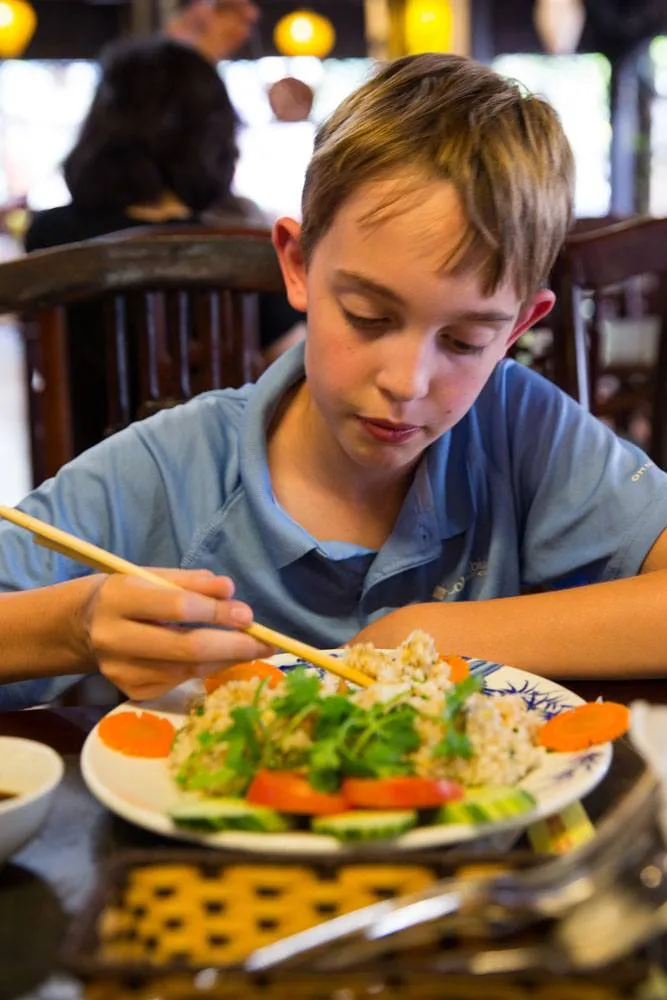
Eating at restaurants in the United States with a food allergy is a much different experience than eating in other countries. In the US, restaurants understand the nature of food allergies, speak your language, and in some cases, even have menus labeled with food allergy warnings. Things are not so easy in other countries. But that doesn’t mean you have to avoid them.
Food allergies, though they exist in Asia, Africa, and South America, occur at a lower incidence than they do in the US, UK, Europe, and Australia. In certain countries, such as Myanmar and Cambodia, for example, many people are not even aware of what a peanut allergy is. This can make conveying your concerns to the restaurant staff difficult. Add in the language barrier and things get to be almost impossible.
So, How Do You Handle Eating Out in Foreign Countries?

Research the main ingredients used in the country you are visiting. There are many destinations where peanuts are rarely used, such as Japan. However, peanut oil can be used here, so you also have to research what type of cooking oils are used.
Other places, like China and Thailand, peanuts are used frequently. The first time you travel overseas you might want to visit a country where peanuts are not so plentiful. It is good to “practice” traveling with a peanut allergy in a country where you speak the language and feel comfortable. After traveling for a little while, you will get more comfortable dealing with the unknowns of foreign countries and later can visit Myanmar, China, or Cambodia.
In countries that cook with a lot of peanuts, stick with “western style” restaurants. In some restaurants, peanuts may not be in the dish you want to order, but there is the risk of cross-contamination during the cooking process. We skipped the local restaurants in some countries. Fortunately, it is easy to find McDonald’s and Pizza Hut all around the world. We would get Tyler his dinner at one of these chain restaurants and then Tim, Kara, and I would eat the local food. I know that fast food is not the healthiest option, but it is much safer than playing Russian roulette with the local food in some locales.
Most larger towns and cities will have at least a small assortment of western style restaurants. Here, you can get spaghetti, macaroni and cheese, and other similar dishes. In many cities, we were surprised at the large numbers of restaurants serving Mexican, Italian, and “continental” foods, giving us numerous dining options to keep Tyler safe.
If you are interested in trying the local fare, go on a food tour. Many tour companies have staff that speaks English. With the growing incidence of food allergies around the world, these food tour companies usually understand the implications of traveling with a peanut allergy. We did this several times and never had an issue. Our guide helped us choose which foods were safe for Tyler to eat. You do have to trust your guide, but it’s a nice option if you want to try local foods as safely as possible.
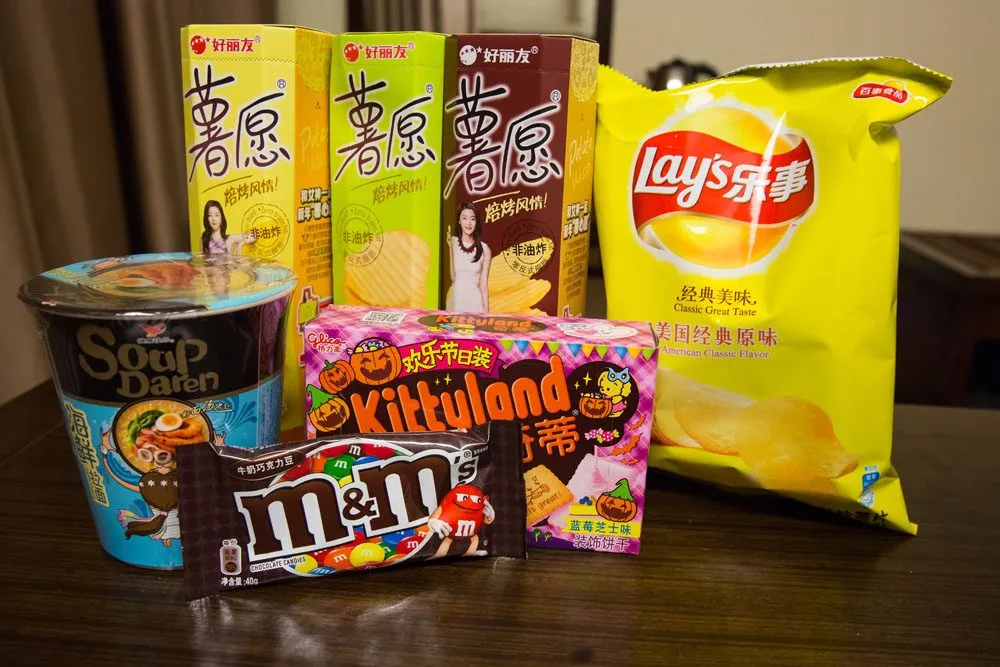
This next tip may be counterintuitive but it is an important one. If you are sitting at a restaurant and your waiter does not speak English very well, do not even verbally mention your peanut allergy. Why? Most likely, they won’t really understand what you are saying. They will only hear “peanut” and think you actually want them to add peanuts to your dish. This happened to us on more than one occasion!! We were able to convey our meaning better before they brought out the dish; but still, it was eye opening for us. For the remainder of our travels, if our waiter did not speak English well, we did not even mention Tyler’s peanut allergy when ordering. However, once the food was served, we asked if it contained peanuts.
Bring translation cards. A translation card is a card with a message written in the language of the country you are visiting, explaining your food allergy. Include one or two sentences explaining your allergy and your reaction. Show this card to your waiter before you order. Having these cards is a huge help. You can get translations online and write the card out yourself, have hotel staff help write a card for you, or you can visit Equal Eats and they will print the cards for you.
Use Google Translate. This is an indispensable tool to use while traveling. Some things do get lost in translation but Google Translate makes it possible to communicate when you cannot speak the language.
Bring your own food. When in doubt, eat your own stash of food. If traveling for 10 days or less, it’s easy to bring a supply of healthy snacks just in case you don’t feel comfortable eating at certain restaurants.
Avoid the hotel buffet. If there are any foods containing nuts or peanut butter, there is a chance that some of that could make it into the other dishes through cross contamination. We have seen this happen in several breakfast buffets and now Tyler either orders off the menu or brings his own food.
How To Travel with a Peanut Allergy Region by Region
Here is a brief overview of which countries are easy to visit with a peanut allergy and which ones are difficult.
Countries Where Peanuts are Less of a Concern
The United States, Canada, Australia, and New Zealand. These three countries have a lot in common…English speaking, similar incidence of peanut allergies, similar diet. It is easy to convey the nature of your allergy to restaurant staff and easy to avoid the restaurants that may pose a threat.
Europe. In general, peanuts are not used much in European cooking. There are actually articles written on how hard it is to find peanut butter in Europe. There may be a language barrier here, but use those translation cards and you should have a great experience! On our most recent trips through Europe, we were pleasantly surprised to see than many restaurants listed allergens for each dish on their menu.
Japan. This is another country that seldom uses peanuts but has a large language barrier. However, peanut oil can be used during cooking.
India. It was rare to come across peanuts in India. What we did have to watch out for were tree nuts. Tyler did have two mild allergic reactions to cashews that were used in the dishes we ordered. Both times, Tyler spent several hours with a stomachache and nausea that gradually faded. Fortunately, this has been the extent of our food allergic reactions while traveling.
Southern Africa (South Africa & Botswana). We spent six weeks in southern Africa. Our experiences here were very similar to traveling in the US or Australia, in that English was the official language and it was easy to find restaurants serving continental food.
Countries where Peanuts are More of a Concern
Southeast Asia. This is the biggest threat for travelers with peanut allergies. We spent three solid, uneventful months here. During this time, we learned that it is remarkably easy to eat great meals without being terrified of the consequences. In larger cities (Bangkok, Singapore, Yangon, Chiang Mai, Siem Reap, Kuala Lumpur, Ho Chi Minh City, Hanoi, and in Bali) there is a plethora of western style restaurants. There are also many more McDonald’s, Subway’s, Starbuck’s, and Papa John’s Pizza joints than you may be aware of. You do not have to starve or live in fear while on vacation in Southeast Asia…there are safe restaurant choices everywhere. Even off the beaten path we were able to find restaurants where English was spoken and pizza or sandwiches were served.
Bali, Indonesia. I (Tyler) traveled to Bali in March of 2023, and despite living with a pretty severe peanut allergy, I was able to enjoy my meals without worrying about my allergy. When traveling, I do prefer to enjoy local cuisine whenever possible as I believe this is one of many ways to immerse yourself in a nation’s culture. Bali was no exception. However, having a severe nut allergy in a country with a language barrier comes with a few complications. At local restaurants, I would clearly ask the waiter if that dish contained any nuts, or even ask if they used nuts at their place of business. If the answer was “yes”, I’d either choose another dish or skip that restaurant. Generally, nuts are added as a topping at the end of cooking. Given this, I could judge just from the menu which food items might be the most safe.
For us, the hardest country in Southeast Asia was Myanmar. Peanuts are farmed here and can be found in many dishes. At times, it was hard to communicate with the restaurant staff, which made us nervous at times, and had Tyler skipping a few meals.

Peanut farmer in Myanmar
The easiest country in Southeast Asia…Thailand. Surprised? We were too! Thailand is the most advanced country in Southeast Asia when it comes to catering for tourists. With that comes a multitude of restaurants geared towards the western traveler with little to no threat of a peanut allergy reaction. Yes, you may have to pass on eating the local food, but at least you still get to see all of the other amazing things that Thailand has to offer.
By the way, some of the street food of Thailand can be ordered without peanuts. For example, when cooking Pad Thai, peanuts are added at the very end of the cooking and are easy to omit. What you do have to be aware of is cross contamination and the use of unrefined peanut oil. Stay away from Papaya Salad…that is prepared with peanuts.
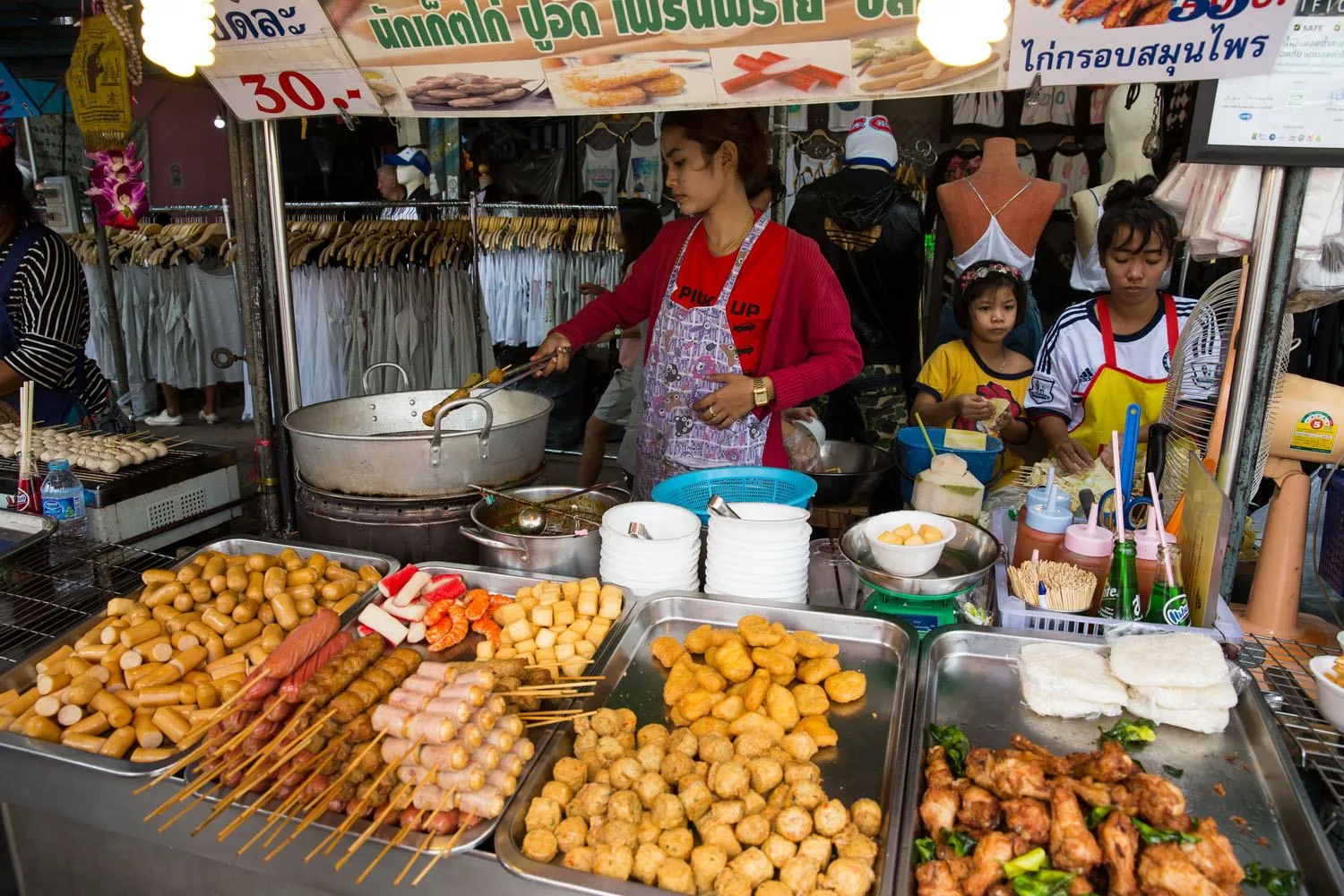
Street food in Bangkok
China. For us, China was difficult. The language barrier is huge, we couldn’t read the menus, and peanuts are frequently used in meal preparation. This is the country where we utilized fast food chains and our own food the most. Tyler would eat his own meal of Subway and Tim, Kara, and I would eat Chinese food. In the larger cities like Beijing and Shanghai, we were able to communicate with the restaurant staff and Tyler could sample Chinese food.

South America. It is thought that peanuts originated either in Peru or Brazil. There is no doubt that they make their way into the foods here. In 2012, Tim and I visited Peru without Tyler and Kara, terrified to bring Tyler here because of his peanut allergy. So yes, we know what it’s like to avoid traveling due to a food allergy. Tim and I arrived in Peru, expecting to see peanuts sprinkled on everything, but that was not the case at all. In fact, we almost never saw peanuts used in cooking and we were left regretting not bringing Tyler along.
This was a learning experience for us. Sitting at home, we tended to imagine the worst scenarios. Once we were traveling, we learned that most of our fears were excessive. Since that trip in 2012, we have included Tyler in every international destination without any issues.
In 2016, we visited Chile and Argentina. Tyler’s peanut allergy was not an issue in either country.
Egypt. On our trip to Egypt, our guide Laila advised Tyler to avoid tahini, hummus, and baba ganoush, since some restaurants will add peanuts to these. Tahini is very frequently served in restaurants and at buffets of hotels.
Links to Food Allergy Websites
My final word of advice is to always err on the side of caution. If you don’t feel comfortable with a certain restaurant or a certain dish, avoid it. It is always better to be safe than sorry.
By writing this post, I am hoping to allay your fears if you are considering traveling with a peanut allergy. Traveling with a peanut allergy may be easier than you think.
Do you have any questions or comments? Do you have any information or personal travel experience you would like to share with our readers? Comment below.
More Travel Advice & Guides from Around the World
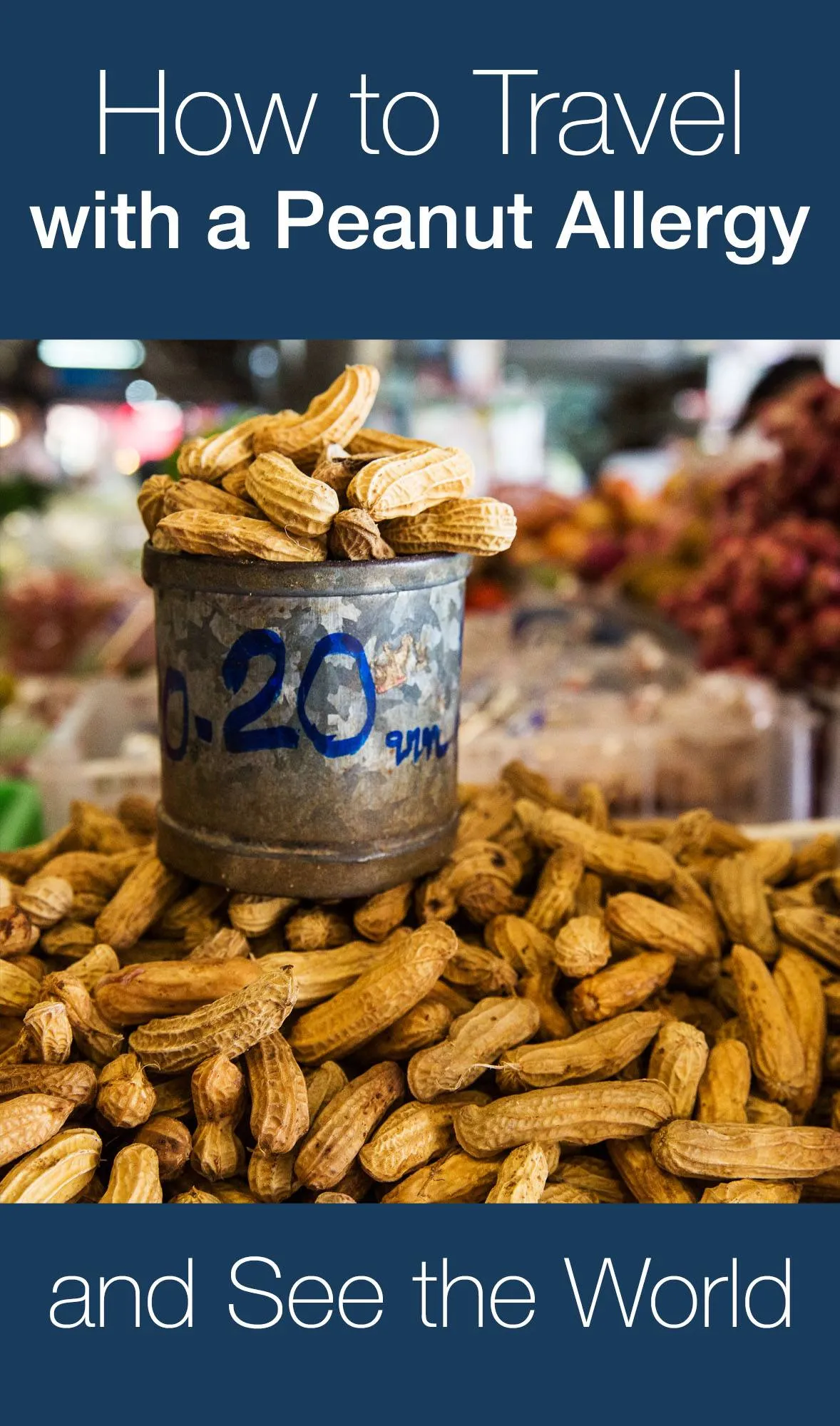
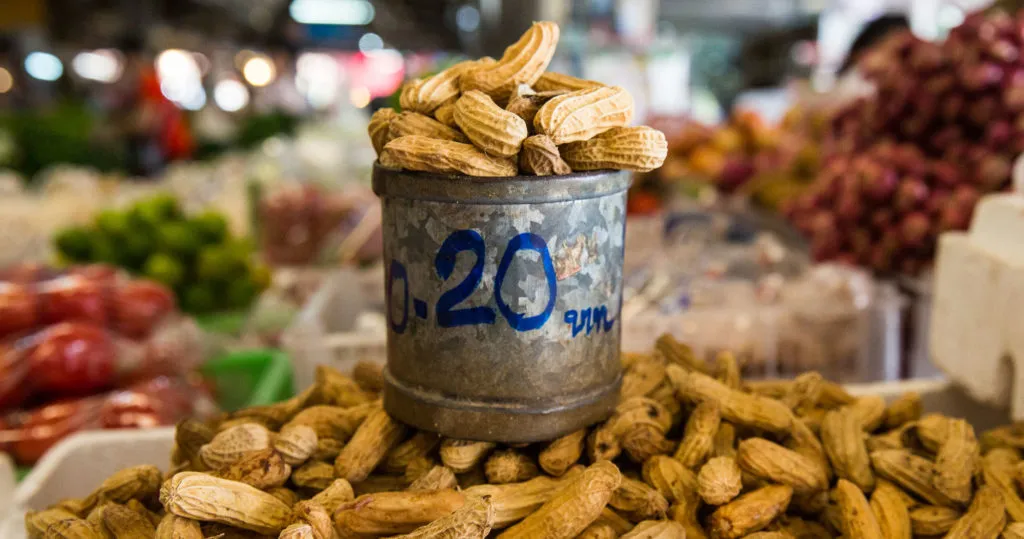

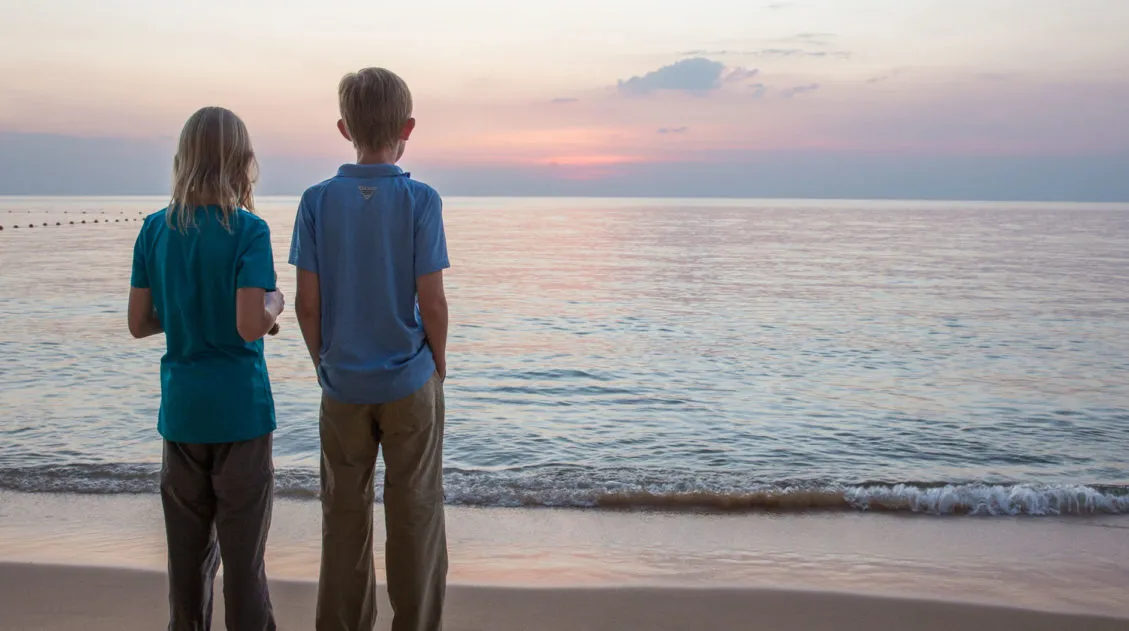



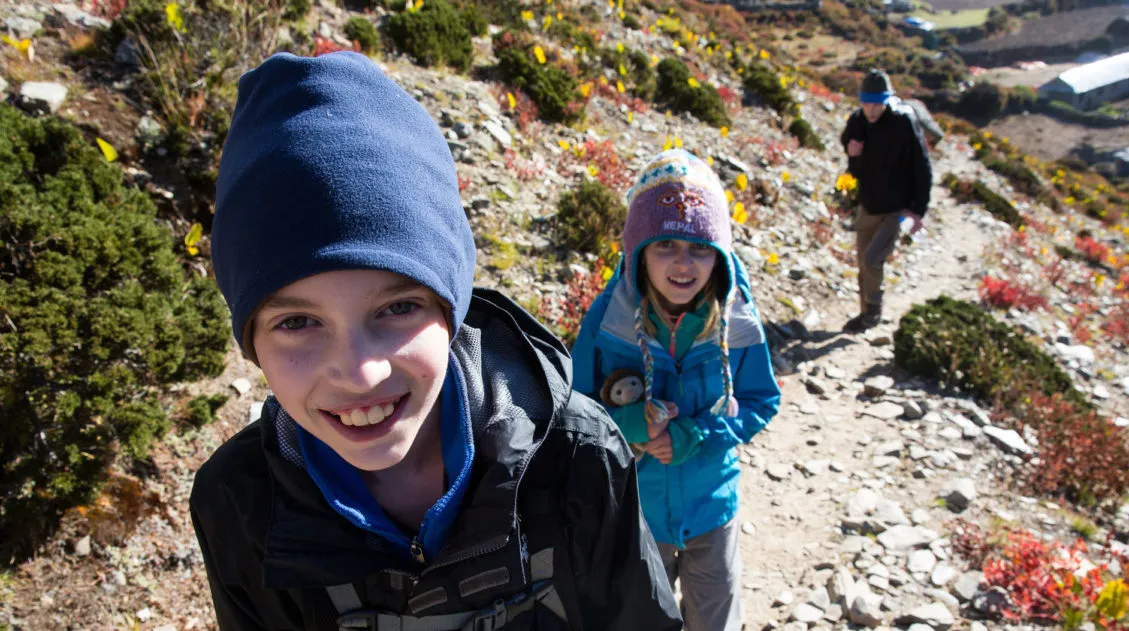





Comments 203